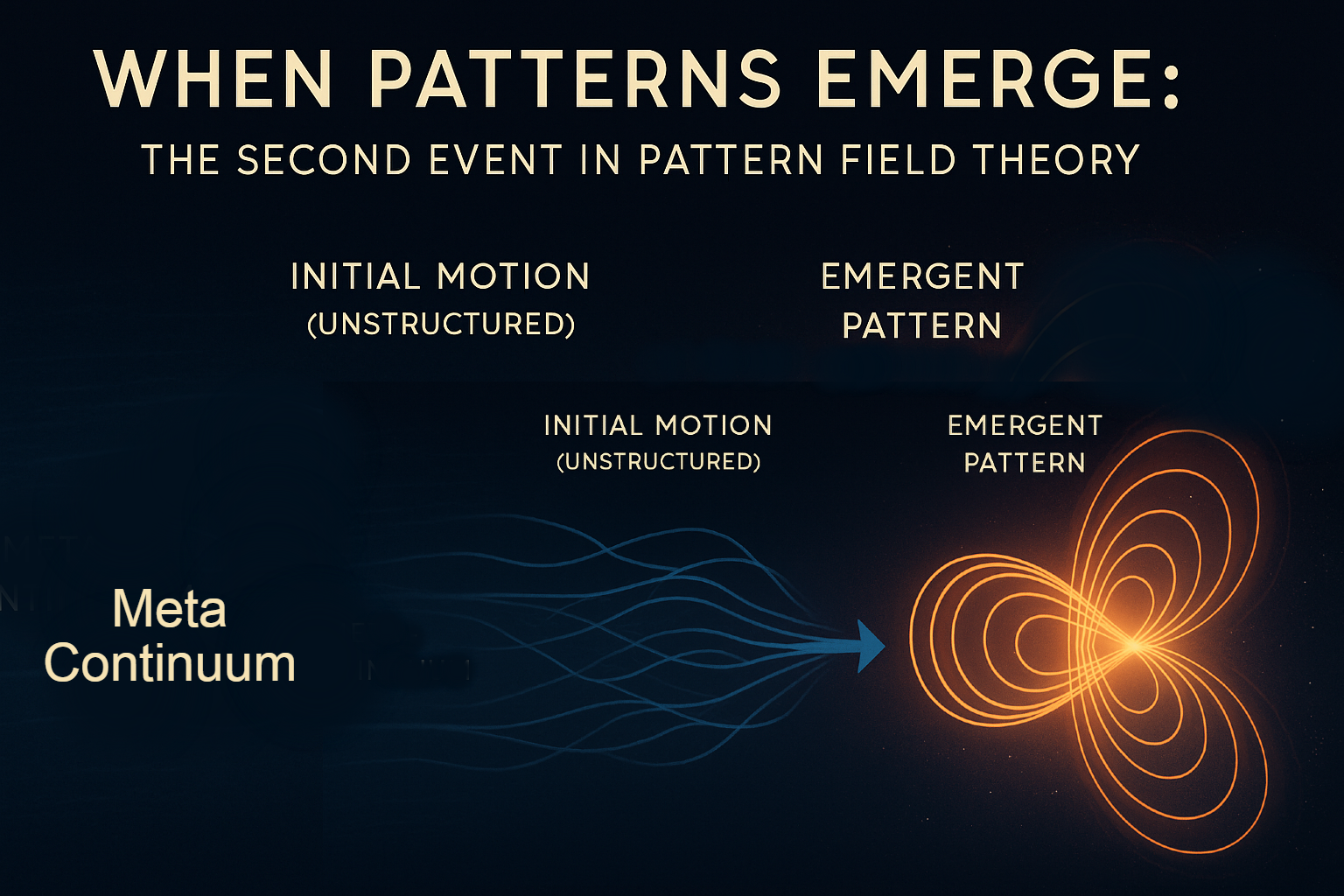When Patterns Emerge: The Second Event in Pattern Field Theory
How motion organizes into stable, measurable structures

Pattern Field Theory (PFT) identifies pattern formation as the second fundamental event in the emergence of physical reality. Following the initiation of motion, stable configurations form through repetition, interference, and recursive reinforcement. These configurations are defined as patterns.
1️⃣ Transition from Motion to Pattern
Initial motion events are unstructured. However, repeated motion over similar paths — especially closed or partially closed loops — results in identifiable patterns. These patterns emerge when the system’s local energy or motion density supports phase alignment or synchronized interaction.
2️⃣ Patterns as Recurrence Structures
A pattern is defined in PFT as a recurrence structure: a motion path that reinforces itself across iterations. This includes orbital paths, spin behavior, wave interference lattices, and other spatial or temporal stabilizations. Recurrence allows encoding, timing, and mechanical identity — all prerequisites for structure.
3️⃣ Phenomena Emerging from Patterns
Pattern stability produces the conditions required for measurable phenomena:
- Time: arises as a function of cyclic or recurrent pattern intervals
- Space: emerges from position relationships between pattern events
- Mass: occurs when recursive motion resists dissolution (self-sustaining)
- Consciousness: modeled as a high-order pattern feedback system
4️⃣ Formal Representation
Patterns are modeled using the Pattern Field Function 𝓟(x,t), describing localized coherence within a dynamic field:
𝓟(x,t) = ∫(m₁ • m₂) ⊗ f(ρ, φ, π)
m₁, m₂: motion sources contributing to the interactionρ: recursive motion densityφ: curvature from field foldingπ: self-coherence metric (looped or quasi-looped behavior)
When threshold values of ρ and π are met in bounded φ, pattern persistence is observed.
5️⃣ Anchoring and Stabilization
Anchoring is the mechanism by which a field node (particle, system, or structure) resonates with and stabilizes an otherwise transient pattern. The anchoring process is mathematically analogous to field coupling — reinforcing a specific solution state among multiple dynamic trajectories.
Anchored patterns are retained in the field and may interact with others, forming hierarchies or complexes. This principle accounts for the emergence of localized systems with internal regularity — including biological organisms and cognitive systems.
6️⃣ Empirical and Theoretical Alignment
The PFT pattern emergence model aligns with:
- ⚛️ Quantum decoherence — where observer coupling selects system outcomes
- 🌀 Self-organizing systems — such as in synergetics and morphogenesis
- 🔁 Oscillatory phase-locking — seen in coupled pendula and neural synchronization
- 🧠 Neurodynamics — emergence of stable patterns from recurrent loops
In each case, measurable phenomena depend on stabilized recurrence under constraints of energy, geometry, and interaction symmetry.
Conclusion
Pattern emergence in Pattern Field Theory marks the point where motion becomes organized into reproducible, measurable configurations. These patterns underlie all observed systems, from particles to galaxies. The field is not passively shaped — it self-selects and locks in recurring dynamics under recursive motion density.
Pattern Field Theory provides a structural framework where observation, recurrence, and physical law emerge from recursive pattern coherence.